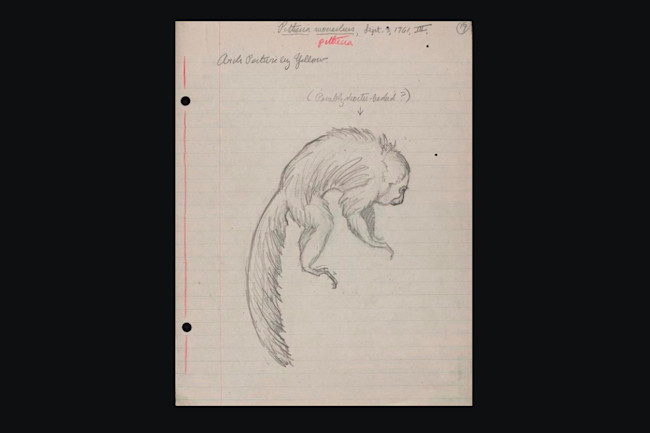
Around the world, in thousands of museums, there are millions of specimens representing the known biological diversity of our world. Each one of those specimens is a physical snapshot of time, prepared and preserved by a collector in a carefully curated collection. They’re often pressed in the pages of books, sketched into drawings and notes, or stored in the jars and drawers of museums. These specimens include all sorts of once-living species — and can reach back centuries.
These are often beautifully and artfully displayed with calligraphy labels and interesting notes about the location of the collection; each cabinet or drawer is full of surprises. By recording and transcribing these museum collections digitally, citizen scientists — people like you — are opening up access to this biodiversity data for use in research and education.
Notes from Nature
Michael Denslow is a founding member of Notes From Nature, a citizen science project on the Zooniverse Platform. He says Notes From Nature is a slightly different type of citizen science project.
“A lot of the Zooniverse projects try to focus on answering specific scientific questions,” Denslow says. “This project is a little different because we are dealing with natural history collections and associated data. There is a big push to digitize and mobilize this data for public use. It is an engagement tool, a tool to do digitization and to bring in educational components.”
Take Part: Help Digitize Museum Collections via SciStarter.org.
Some participants have used the images in creative ways. One volunteer takes the images to create art. Others have made some surprising finds.
“We found a specimen collected by Darwin mixed in with the other specimens," Denslow says. “There are a lot of local heroes and interesting things that people discover. We’ve built an amazing community. A lot of volunteers are interested in the history of the specimens.
WeDigBio
The WeDigBio Project, or Worldwide Engagement for Digitizing Biocollections, taps citizen scientists to work with museum collections either online or in person at events organized around the world.
Austin Mast is a research botanist and professor at Florida State University, where he serves as director of the Robert K. Godfrey Herbarium. He describes how each project fits into the bigger WeDigBio picture.
Dark Data: The Vulnerable Treasures Sitting on Museum Shelves
“We continue because we saw immediate payoffs,” Mast says. “Creating digital data about the specimens and serving it online makes it possible to aggregate data from across many collections with relative ease and makes individual specimens easily discoverable. Anyone can now go to an aggregator of this digital data, such as iDigBio.org or GBIF.org, and map all of the digitized specimens of their favorite species.”
Scientists regularly use this citizen science data for research.
iDigBio is the U.S. National Science Foundation’s National Resource for Advancing Digitization of Biodiversity Collections. The program tracks research that uses the more than 120 million specimen records that it aggregates. In 2019 alone, they documented well over 500 papers using the data. These topics included conservation assessments, species distribution modeling, and automated species identification.
You can participate online by joining the Les Herbonautes, DigiVol, Notes from Nature, or Smithsonian Digital Volunteers. You’ll be helping digitize collections ranging from insects to mammals, plants and more.
“People who don’t necessarily have degrees in these fields have always made a contribution to our field,” says Denslow. “There’s a long history of that. If this is of interest to you, please come! Do a couple of transcripts and see what grabs you. Let us know what you like and what you don’t like.”
Find More Citizen Science Projects by Visiting SciStarter.org.
"help" - Google News
July 04, 2020 at 03:06AM
https://ift.tt/2BAlIaI
Museums are Full of Forgotten Treasures. Here's How You Can Help Find Them - Discover Magazine
"help" - Google News
https://ift.tt/2SmRddm
Bagikan Berita Ini














0 Response to "Museums are Full of Forgotten Treasures. Here's How You Can Help Find Them - Discover Magazine"
Post a Comment